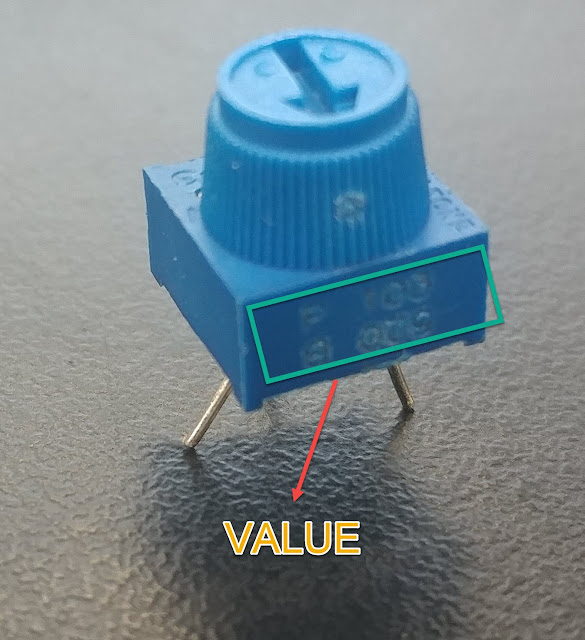In the market, there any many types of potentiometer. For a different application, we use different types of the potentiometer. Today we will look into the preset potentiometer with a knob. I like this the most because you don't need any tools to change the resistance. We make barely use our finger to change its value. Theoretically, the function of this potentiometer is the same as other potentiometers. The image below is the illustration of the potentiometer.
Basically, this device comes with three terminals. If you are reading the pin from top. The arrangement is a below
And the value of the potentiometer can be known from the side of the potentiometer whereby it will be engraved. The image below shows where we can get the reading.
The actual value which is being shown is 103. Which means it is 10K ohm. The way to read this is, the first to digit is the value and the last digit is the number of zeros.
In case we cannot figure out the value of the potentiometer through the first method, we can measure it using the multimeter. This can be done by connecting the VCC end to one probe and the and the GND terminal to another probe. Make sure the setting of the multimeter is at ohm measurement. This is another way of getting the potentiometer value.
The image below shows the value of the potentiometer measured with the multimeter.
Lastly what we can do is to try to connect this to the Arduino and display its value through the LCD.
The video below shows the demonstration
Some snapshot
The video
Thank you.









